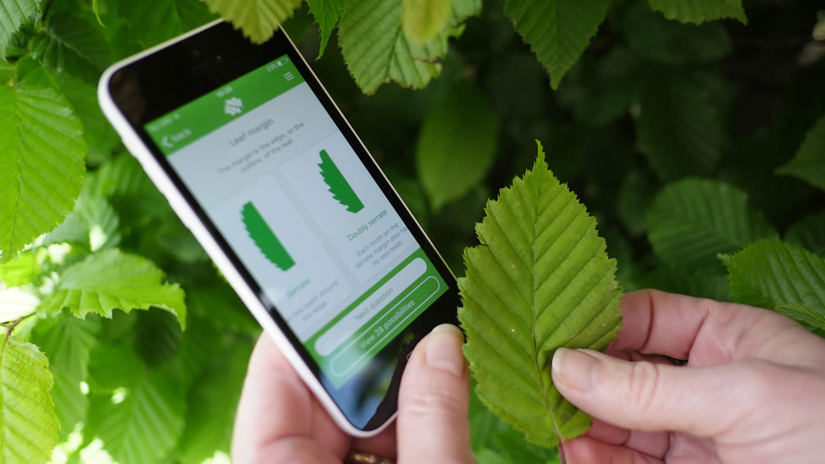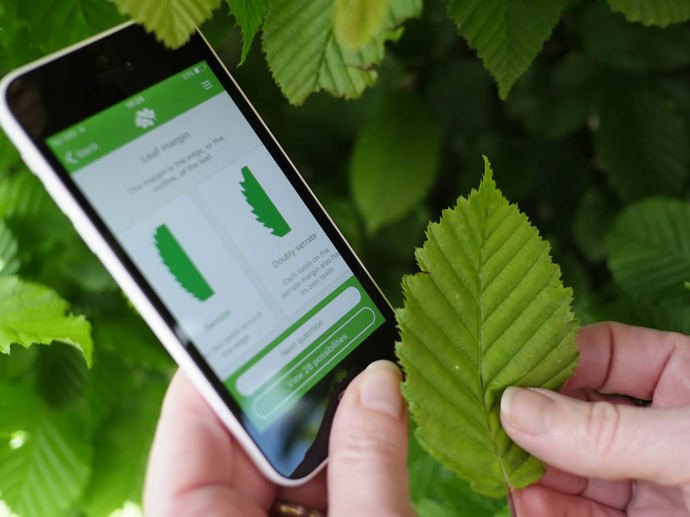Common names: Lawson cypress, Port Orford cedar
Scientific name: Chamaecyparis lawsoniana
Family: Cupressaceae
Origin: non-native
Tall ornamental with feathery foliage. One of the UK’s most popular garden conifers, Lawson cypress has rot-resistant wood which is popular in Japan for coffins and shrines.
Common names: Lawson cypress, Port Orford cedar
Scientific name: Chamaecyparis lawsoniana
Family: Cupressaceae
Origin: non-native
Lawson cypress is an evergreen, narrowly conical tree that can reach up to 45m high. The trunk often forks. The bark is cracked into vertical plates and the twigs are a dark bluish-grey.
Look out for: the leaf scales, on flattened shoots which are fern-like and have narrow, white markings underneath.
Identified in winter by: the top of the tree which droops over. The crushed foliage gives off a pungent parsley-like scent.

Credit: Zoonar GmbH / Alamy Stock Photo
Short scale-like leaves are grouped in fours and hide the twigs, forming flat planes. They are closely pressed together, producing flat sprays of foliage. They are green with a whitish tinge underneath. The foliage has a pungent scent, rather like parsley.

Credit: Niall Benvie / naturepl.com
Minute flowers, which look like buds, open at the twig tips in spring. Male flowers are crimson, becoming yellow with pollen, and females are blue.

Credit: FLPA / Alamy Stock Photo
Cones ripen from female flowers, starting green, then turning cream and finally ending brown. They are pea-sized with broad scales.
Leyland cypress (Cupressus x leylandii). Lawson cypress twigs grow in flattened, horizontal sprays. Cones are rarely more than 1cm in diameter and many cultivated varieties have golden or green-blue foliage.


Download our free Tree ID app for Android and iPhone to identify the UK's native and non-native trees. It's an A-Z tree guide in your pocket.
Lawson cypress is native to California and was introduced to Britain in 1854. There are now many ornamental cultivars. This evergreen tree is grown widely in parks, gardens and churchyards. It can regenerate from seed, and has naturalised on banks, walls and woodland margins throughout lowland UK. It grows best in moist but not waterlogged soils.
Lawson cypress is named after Scottish nurseryman and plant collector, Charles Lawson (1795–1873), whose father founded the Peter Lawson & Son plant nursery based in Edinburgh.
The dense foliage provides shelter for nesting birds, including various finches, when many broadleaved trees are still in bud.

In its native northern California, the Karuk people (north American Indians) used branches from Lawson cypress to build sweat lodges – low, humped buildings where they took ritual steam baths to purify themselves. They also made the branches into brooms.

Credit: Anne Gilbert / Alamy Stock Photo
The wood, which is strong and light, is highly valued in Japan for coffin and shrine construction. It is also used to make arrow shafts and musical instruments, especially guitars. It is grown widely in the UK as an ornamental tree.
Particularly susceptible to Phytophthora root rot which causes branch dieback and wilting foliage.